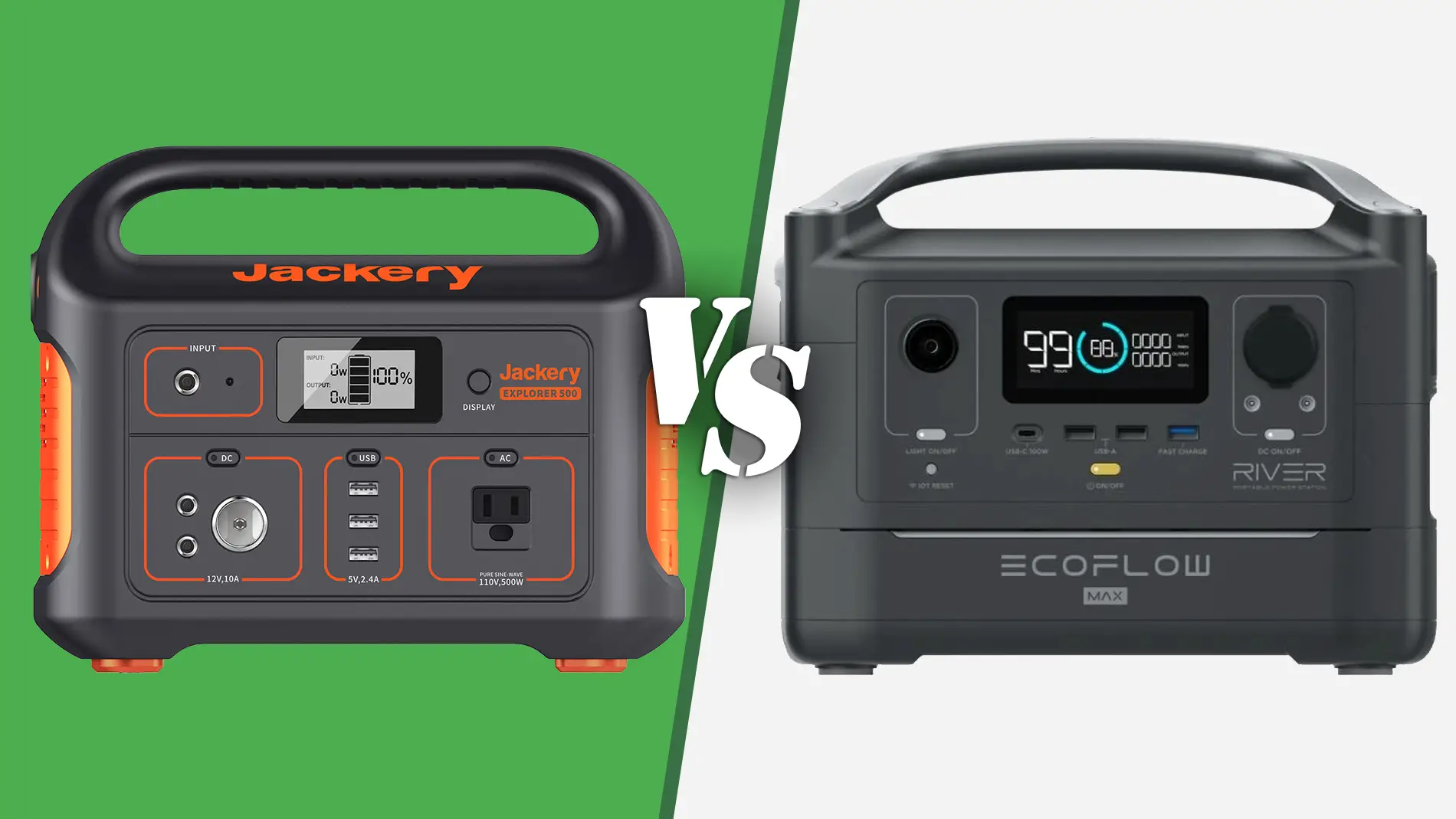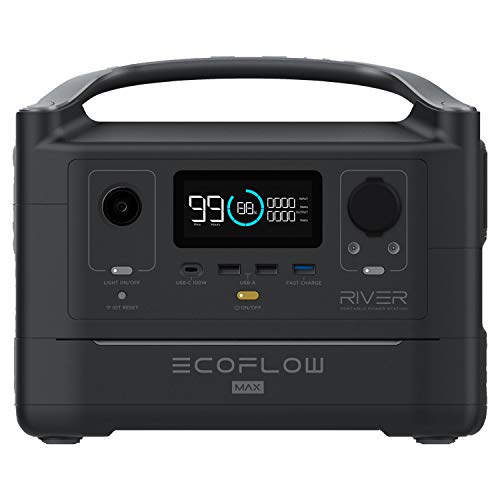Power banks aren’t new, but not all of them are made equal. If you need a power bank that will help keep the lights on, quite literally, during a power outage, then forget about those tiny power banks that you carry with you in your backpack. Instead, what you really need are power stations like those made by Jackery and EcoFlow.
Both companies are known for their power stations, which are basically massive power banks that contain enough juice to charge up major appliances whether it be your smartphone, tablet, laptop, TV, or even a mini-fridge! These types of devices are actually perfect for backup power usage or even if you’re out camping and need some extra power for lights or whatnot.
Now, given that both companies kind of make the same thing, it might be a bit confusing as to which would be a “better” choice, so we’re here to help you with that decision.
| Jackery Explorer 500 | EcoFlow RIVER Max | |
|---|---|---|
| Price | $499 | $599 |
| Battery Capacity | 518Wh (21.6V) | 576Wh (28.8V) |
| Outlets |
|
|
| Battery Chemistry | Li-ion NMC | Li-ion NMC |
| Charge Cycles | 500 cycles to 80%+ capacity | 500 cycles to 80%+ capacity |
| Solar Charge Input | 100W 12V DC 12A Max | 200W 10-25V DC 12A Max |
| AC Inverter Output | 500W (1000W Surge) | 600W (Surge 1200W) |
| Charge Time |
|
|
| Weight | 6.03 Kg (13.3 Lbs) | 7.7 kg (17 lbs) |
| Dimensions | 30 x 19.2 x 24.2cm | 28.9 x 18.4 x 23.5 cm |
Jackery Explorer 500
Jackery’s power stations can probably be best recognized by the bright orange highlights the company typically uses for its design. This is actually great if you want something that’s easy to find and obvious as to what it does. The company’s power stations have been designed to be eco-friendly because they can be charged up using solar power.
This also makes it ideal if you’re camping outdoors or traveling around the country in an RV and want an alternate way of powering up your devices. The Jackery Explorer 500 comes with a decently-sized 518Wh battery. This means that it is capable of juicing up an average smartphone as many as 53 times, or a laptop about four times over. If you want to run a mini fridge the Explorer 500 will also have no issues handling it.
The downside is that the Explorer 500 will not be capable of handling certain appliances which have a rating of over 500W, which includes kettles, blenders, coffee makers, or drills.
EcoFlow River Max
If you prefer your gadgets to sport sleek and subdued looks, EcoFlow’s all-black design is probably going to be hard to resist. Similar to Jackery’s offerings, the EcoFlow River Max is capable of recharging via solar power through the use of solar panels, making it perfect if you’re constantly on the move and don’t always have access to a wall outlet.
The EcoFlow River Max also uses the company’s X-Boost technology that will allow you to power devices up to 1200W, which means that if you need to power DIY tools or certain home appliances and kitchen tools, it should be up for the job. This includes appliances like projectors, blenders, coffee makers, TVs, electric kettles, an electric frying pan, and more.
Which one should you buy?
If you’re on a tight budget, Jackery’s Explorer 500 is the clear choice. Priced at $450 (with the frequent discounts and coupon codes available on Amazon), this is about $150 cheaper compared to EcoFlow’s River Max. But that’s pretty where the competitive edge of Jackery’s Explorer 500 ends.
Even if EcoFlow’s River Max is out of your budget, you might still want to consider dropping that extra $150. In terms of ports and outlets, the River Max has the Explorer 500 beat. It even has a USB-C port which is what newer smartphones, tablets, and laptops use these days.
Plus it has a bigger battery and is capable of powering devices up to 1200W, which gives you more flexibility when it comes to what you can do outdoors. We understand that a price difference of $150 might be a bit too much for some of you, but given that both devices offer a similar 500 charge cycle, you’ll definitely get a lot more bang for your buck with the EcoFlow River Max.
Note: this article may contain affiliate links that help support our authors and keep the Phandroid servers running.















Comments